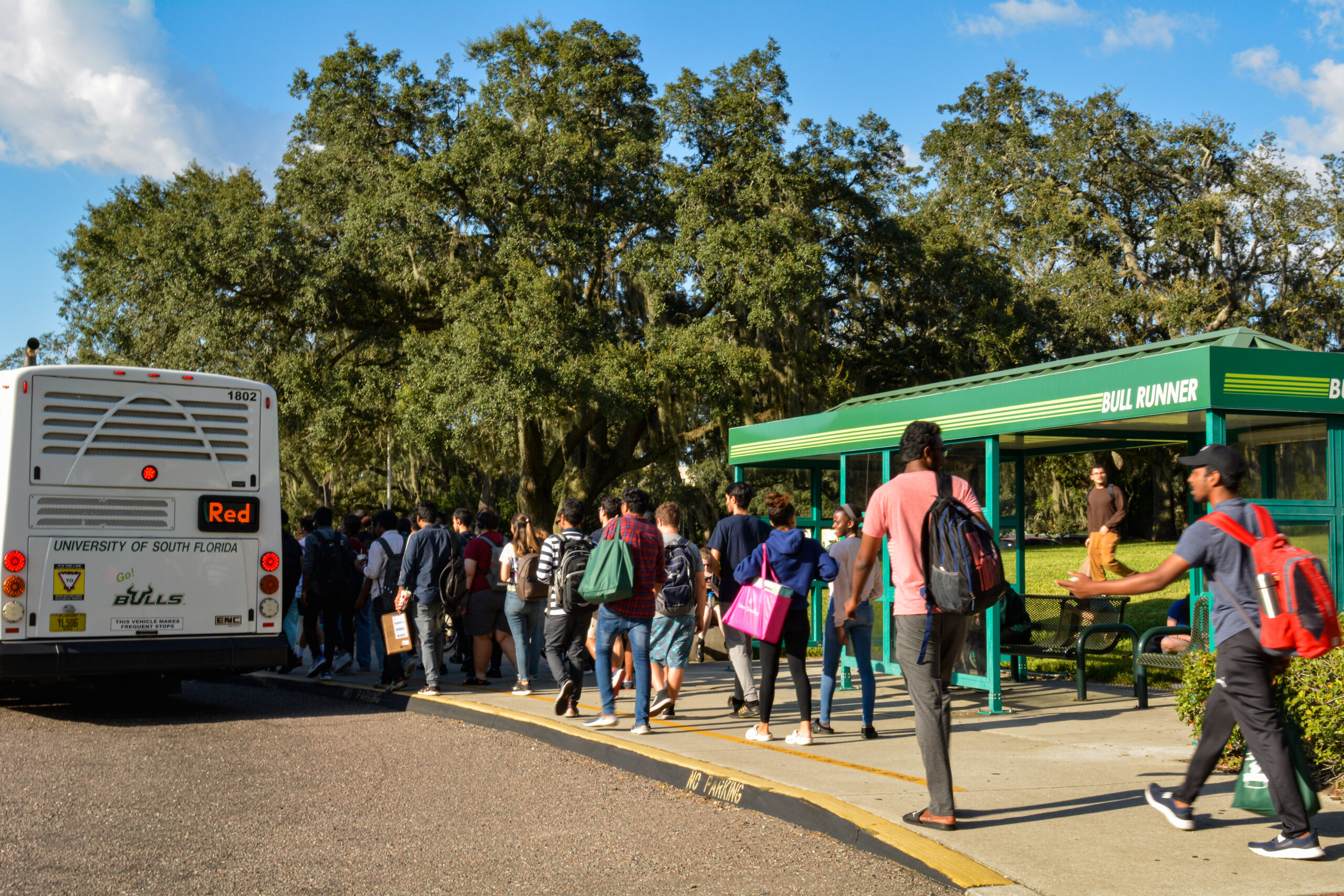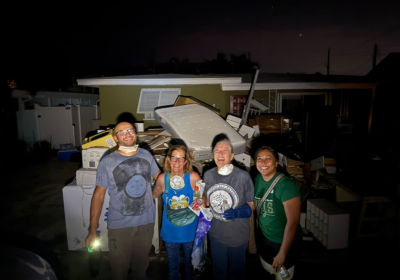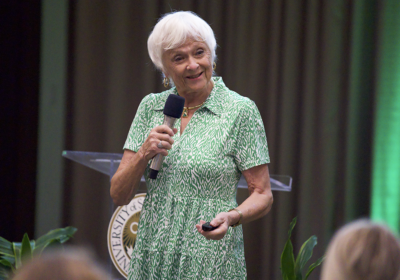Driver shortage causes congestion in Bull Runner buses

Some students have been affected by the high demand for the Bull Runner buses and the number of vehicles currently available on the Bull Runner system.
Here’s a breakdown of the ridership numbers from July 1 to Aug. 31, 2022 and July 1 to Aug. 31, 2023:
- 2022: 1,042 average daily rides; 63,574 total number of rides
- 2023: 1,850 average daily rides; 109,177 total number of rides
This represents a 72% increase in ridership, according to Director of Communication and Engagement Aaron Nichols.
Junior psychology major Britney Lam said she believes some bus routes are in urgent need of special attention, as some of them only have one bus available.
The Blue, Orange and Brown routes currently have one bus each, while the Green, Purple and Red routes currently have two buses each, according to Nichols. All together, there are nine buses that service the routes.
Because of that, students can’t get on a bus due to it being full and have to wait a long time for the vehicle to circle back to their stop, according to Lam.
“The Orange route takes around 25 minutes to make a full circle, so I would like to have another bus added to that route,” Lam said.
Parking and Transportation Services’ (PATS) goal during peak demand is for the Purple and Red routes to have three buses each, the Green, Blue and Orange routes to have two buses each and the Brown route to have one bus, according to Nichols. This is four buses short of their current buses on routes.
The service currently has 23 full-time drivers, six non-student part-time drivers, 11 part-time student drivers and four drivers in training, which does not meet PATS’ needs, according to Nichols. They are actively recruiting 11 drivers.
Compared to July 2022 when there were 36 drivers, there is an increase in drivers but the ridership demand has also gone up, according to Nichols.
Because of this, Nichols said PATS’ goal is to hire additional drivers to help increase the number of buses it has on busier routes.
Nichols said he attributes the Bull Runner driver shortage to a larger national issue. A school transportation service named HopSkipDrive performed a survey on the national bus driver shortage and interviewed school officials.
In 2021, 78% of the respondents reported that bus driver shortages interfered with operations, while in 2023 that figure increased to 92%.
CEO and executive director of the National Association for Pupil Transportation Molly McGee-Hewitt said in an interview on Aug. 25 for National Public Radio that the pandemic was one of the main reasons for the current national bus driver shortage.
Bus drivers were left unhired for almost three years during the pandemic, according to McGee-Hewitt. They had to find different jobs during the pandemic, and some of them never went back to their original profession, according to WUSF Public Media.
The buses range in rider capacity from 15 to 70 people, with the larger capacity buses being used on the routes with higher demand, according to Nichols.
Public health graduate student Melissa Avila said she believes that the Bull Runner should have more vehicles circulating in each route to prevent bus shortages during peak hours.
“I have tried getting onto buses that were so full I couldn’t even get in. It does happen during the day more than it does at night,” Avila said.
In the event a bus does reach the maximum rider capacity, the driver changes the digital sign on the front of the bus to advise the bus is at capacity. Then, they notify the dispatch office which reroutes or adds a bus to assist, Nichols said.
Junior psychology major Nefeli Kokkinolambou said she thinks the Bull Runner system should have a way of notifying students ahead of time when buses are full. Only changing the sign in front of the bus is not effective, as students are not able to prepare themselves for a second plan ahead of time, according to Kokkinolambou.
“One thing that happened to me was that when the bus arrived at the stop, the bus driver told me that I should wait for the next one because it was full. Maybe they could warn us on the app when a bus is full,” Kokkinolambou said.
PATS is also reviewing on-demand transportation initiatives, according to Nichols.
These initiatives could involve a way to notify the buses that transportation is needed. The service could be used to augment existing service or to free up underutilized resources so PATS can focus on more high demand areas.
However, PATS is still in the very early exploration stage, and Nichols said no specific solutions have been determined yet.
For students who live off campus, depending on where their buildings are, they have to take two or three buses from different routes to get to class. That means that if you lose one of the buses due to full capacity, the rest of your trip will be delayed, according to Avila.
“Putting out more buses in the morning would help solve the congestion issue, especially for students like me who live off campus and rely on the Bull Runner buses to get to school,” said Avila.






